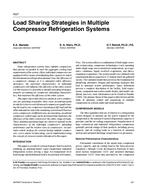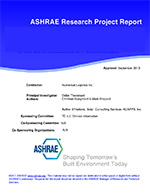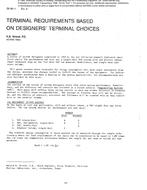A residential building, constructed with an unvented attic, is acommonroof assembly in the United States.The expected hygrothermalperformance and service life of the roof are difficult to estimate due to a number of varying parameters.Typical parametersexpected to vary are the climate, direction, and slope of the roof as well as the radiation properties of the surface material. Furthermore,influential parameters are indoor moisture excess, air leakages through the attic floor, and leakages from air-handling unitand ventilation ducts. In addition, the type of building materials such as the insulation material and closed or open cell spraypolyurethane foam will influence the future performance of the roof.
A development of a simulation model of the roof assembly will enable a risk and sensitivity analysis, in which the most importantvarying parameters on the hygrothermal performance can be determined. The model is designed to perform probabilisticsimulations using mathematical and hygrothermal calculation tools. The varying input parameters can be chosen from existingmeasurements, simulations, or standards. An analysis is applied to determine the risk of consequences, such as mold growth, rot,or energy demand of the HVAC unit. Furthermore, the future performance of the roof can be simulated in different climates tofacilitate the design of an efficient and reliable roof construction with the most suitable technical solution and to determine themost appropriate building materials for a given climate.
Presented at Thermal Performance of Exterior Envelopes of Whole Buildings XII, December 2013
Citation: Thermal Performance of Exterior Envelopes of Whole Buildings XII
Product Details
- Published:
- 2013
- Number of Pages:
- 17
- File Size:
- 1 file , 4.1 MB
- Product Code(s):
- D-BldConf13-56


